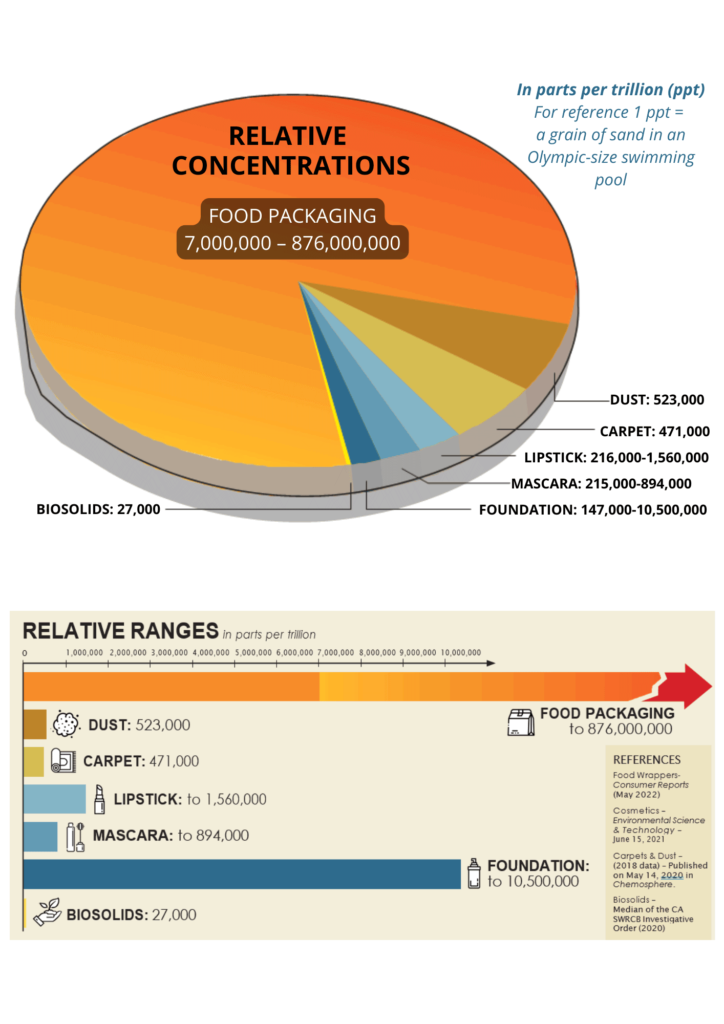Per- and polyfluoroalkyl substances, or PFAS, are widely used, long lasting chemicals, components of which break down very slowly over time. PFAS are manufactured chemicals that have been used in industry and consumer products since the 1940s. There are thousands of different PFAS, some of which have been more widely used and studied than others. Perfluorooctanoic Acid (PFOA) and Perfluorooctane Sulfonate (PFOS), for example, are two of the most widely used and studied chemicals in the PFAS group. PFOA and PFOS have been replaced in the United States in recent years.
Because of their widespread use and their persistence in the environment, many PFAS are present at low levels in a variety of food products and in the environment. PFAS are found in water, air, fish, and soil at locations across the nation and the globe, and commonly found in every American household, and in products as diverse as non-stick cookware, stain resistant furniture and carpets, wrinkle free and water repellant clothing, cosmetics, lubricants, paint, pizza boxes, popcorn bags, and many other everyday products.
Since PFAS are in so many products consumers use every day, trace amounts are found in biosolids because these reflect the chemistry of our society. PFAS are being detected in biosolids in parts-per-trillion. At this level, exposure through biosolids is exponentially smaller than cooking with Teflon-coated pans, eating fast food, using certain brands of dental floss, or even consuming cake made from store-bought mixes, all products which contain PFAS. The U.S. EPA is working on a wide range of activities to better understand PFAS and reduce risks to the public.
There is a concern about PFAS because studies have shown that exposure to some PFAS in the environment may be linked to harmful health effects in humans and animals. Research is still ongoing to determine how different levels of exposure to different PFAS can lead to a variety of health effects. Research is also underway to better understand the health effects associated with low levels of exposure to PFAS over long periods of time.
Utilities that clean drinking water and provide wastewater recovery and treatment are not “producers” or users of PFAS. None of these essential public service providers utilize or profit from PFAS chemicals. Rather, they are “receivers” of these chemicals used by manufacturers and everyday consumers, and merely convey and/or manage the traces of PFAS coming into these systems daily. To address the true sources of these chemicals, it is imperative to discontinue and phase out production and use (both domestic and foreign) at manufacturing facilities and find safer alternatives for heavy use areas such as firefighting training sites. As long as PFAS are elements of products used in our everyday lives, and background levels resulting from decades of manufacturing and use persist, these chemicals will continue to be found in “receiver” streams.

Related Links
U.S. EPA: PFAS Strategic Roadmap: EPA’s Commitments to Action 2021-2024
U.S. EPA: PFAS Treatment in Drinking Water and Wastewater – State of the Science
Virginia DEQ: PFAS Information
EREF: Environmental Research & Education Foundation